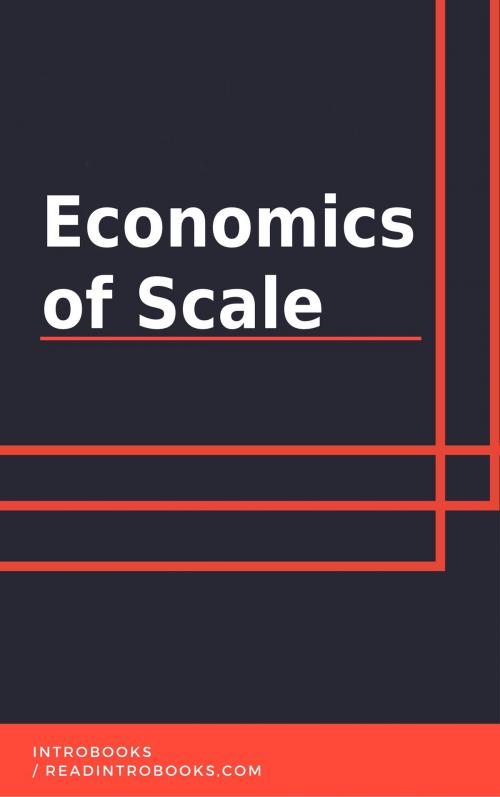| Author: | IntroBooks | ISBN: | 9780463990988 |
| Publisher: | IntroBooks | Publication: | December 19, 2018 |
| Imprint: | Smashwords Edition | Language: | English |
| Author: | IntroBooks |
| ISBN: | 9780463990988 |
| Publisher: | IntroBooks |
| Publication: | December 19, 2018 |
| Imprint: | Smashwords Edition |
| Language: | English |
The beginning of this economic concept, economies of the scale, can be dated back to Adam Smith who was a Scottish pioneer of political economy and an important key figure during the Scottish Enlightenment Era who first mentioned this concept in his book “Wealth of Nations” in 1776 and was based on the idea of obtaining greater production return profits through the use of division of labour.
The economies of the scale rely over the fixed cost that are uniform and do not vary with any of the alterations in output processes or variable costs which may undergo changes due to change in the amount of output. Other sources of the economies of scale are Production, Managerial, Technological, Financial, and Marketing.
The economies of scale tend to have a significant effect on the production costs of the material. The economies of scale reduce the per unit fixed cost of the product and with increased production the fixed cost of the product expands over the entire output at a greater rate than before. The economies of scale are also responsible for bringing down the per unit cost value of the product. This occurs due to the expansion of production scale which as a result improves the efficiency of the production processes.
The economies of scale are cost-advantageous and the working of business takes place through exploitation of expanding scale of production. There are broadly two main types of economies of scale- Internal and External economies of scale which are further subdivided into various types.
In simple terms, diseconomies of scale can be understood as the opposite condition of economies of scale. It is a condition which arises when economies of scale fail to function within the firm and when there is an increase in the value of costs per unit. The basic fundamental concept of economies of scale was- lesser the quantity of produce, the greater the per unit fixed cost of the product. The diseconomy of scale generates in the condition of the exact opposite case. One of the primary reasons for the diseconomy to occur is the inability of the firm to manage a larger number of workforce.
The beginning of this economic concept, economies of the scale, can be dated back to Adam Smith who was a Scottish pioneer of political economy and an important key figure during the Scottish Enlightenment Era who first mentioned this concept in his book “Wealth of Nations” in 1776 and was based on the idea of obtaining greater production return profits through the use of division of labour.
The economies of the scale rely over the fixed cost that are uniform and do not vary with any of the alterations in output processes or variable costs which may undergo changes due to change in the amount of output. Other sources of the economies of scale are Production, Managerial, Technological, Financial, and Marketing.
The economies of scale tend to have a significant effect on the production costs of the material. The economies of scale reduce the per unit fixed cost of the product and with increased production the fixed cost of the product expands over the entire output at a greater rate than before. The economies of scale are also responsible for bringing down the per unit cost value of the product. This occurs due to the expansion of production scale which as a result improves the efficiency of the production processes.
The economies of scale are cost-advantageous and the working of business takes place through exploitation of expanding scale of production. There are broadly two main types of economies of scale- Internal and External economies of scale which are further subdivided into various types.
In simple terms, diseconomies of scale can be understood as the opposite condition of economies of scale. It is a condition which arises when economies of scale fail to function within the firm and when there is an increase in the value of costs per unit. The basic fundamental concept of economies of scale was- lesser the quantity of produce, the greater the per unit fixed cost of the product. The diseconomy of scale generates in the condition of the exact opposite case. One of the primary reasons for the diseconomy to occur is the inability of the firm to manage a larger number of workforce.















